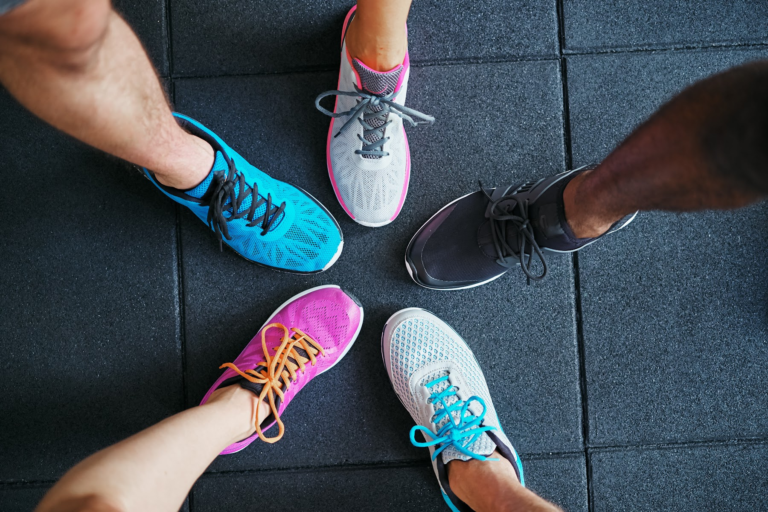When Should You Use Trail Running Shoes?
Do you sometimes get challenges in choosing what type of running shoes to wear when you head out? Well, that is a common problem with many runners. It can be a hassle to select the particular running shoe for your course, especially if you are not aware of the features. Specifically, when you should you use trail running shoes vs. normal running shoes?
Many people will say that all running shoes are the same, but in fact, they are different. There is a particular running shoe for each course, depending on the path you are running on. Each running shoe is purposed to provide comfort, and this is where the difference lies.
For instance, the road and tracks are challenging because they are made of concrete and asphalt. However, off-road trails are more natural with soil and stones, which are pretty soft. In that accord, the shoes for these different running environments will require special features to provide a good running experience to the user.
So what are trail running shoes, and when should you use them?
What Are Trail Running Shoes?
Trail shoes are running shoes that are designed to cope well with the off-road environment. These shoes are built to withstand the dust, the soil, the stones, and the grass in whatever setting. They are ideal if you run on the beach, in the forest, off-road, on grassy fields, or on bridleways. They are specially designed and adapted to withstand any uncomfortable environment on nature trails and rugged terrain.
Features
These running shoes have unique features that make them ideal for the off-road environment. Some of the selling factors include
- Thick uppers – trail running shoes have thick uppers, usually made of thicker materials and tightly woven mesh, to prevent any rips from the trail debris.
- Stable – under your foot and along the sides, trail shoes have support materials. They are stability features to get you through any uneven surfaces.
- Dark colors – although you might still find some bright-colored trail shoes, most of them are designed to be darker to hide the dust and dirt from the trails.
- Protected toe box – trail shoes have a wider toe box that is covered in rubber. They also include toe bumpers that protect your toes from trail debris.
- Heavy soles – the teeth, stickier rubber, and large lugs on these shoes are designed to offer a good grip on any uneven trail surface. Besides providing better traction to get you through the mud and dirt, trail shoes have a hard plastic surface in the midsole area for a rock plate. This protects you from sharp sticks and rocks.
- Gusseted tongue – trail shoes have a gusseted or bellows tongue that attaches along with the laces to better grip and firmness when you tie the shoes.
- Heavy in general – these shoes are typically heavier than other running shoes. However, different weights depends on the type of shoes. The different kinds include light trail shoes, rugged trail shoes, and off-road shoes.
–
Benefits of Trail Running Shoes
There are different benefits that a runner will enjoy while wearing trail shoes. Some of them include
- Stability – trail running shoes offer stability with the different sole designs and materials used to make them.
- Protection – with a protected toe box and a rock plate, trail shoes address your foot protection needs to prevent any injuries.
- Running intensity – off-road running shoes are relatively heavier, which requires more energy while lifting a leg at a time. This intensifies the running session since you get to make the session harder, claiming more gains eventually.
- Easy to clean – trail shoes are mostly dark in color and don’t show much dirt and dust from running. This allows you to use them even twice before washing them. Most of them are machine cleanable, which is a plus.
- Fit different settings – did you know that you can also use these shoes for road and track running? Trail shoes fit different environments as long as you pick the one that can serve perfectly in the various running course.
–
Should You Use Trail Running Shoes?
The significant concern always comes down to whether you should use trail running shoes on a different course. Well, you can! These shoes are ideal for the nature experience, for they can withstand the environment along the path and give you the required stability to push through your running session. They are also imperative if you attempt ultra running.
Moreover, this type of shoe can also be fit for the road running environment. Although you should choose the right kind of trail shoes, usually the light trail shoes, they can work out well on the road. They offer extra resistance due to their weight and also stability because of the design. They might be a barrier at some point since the rock plate might cause discomfort to your foot while running.
Did you know that trail running shoes are also ideal for hiking? The hiking environment is similar to the trail running course. You will require trail shoes to run through the obstacles and the rocky and grassy bridleways. You can also consider wearing trail shoes for suspension exercises for the extra weight while suspended, and they have high-top designs where you can fit your ankle weights.
–
When to Wear Trail Running Shoes
It is also essential to know when you should use trail running shoes. The shoes are ideal for challenging environments, and that is what should be your key consideration. Any muddy, uneven, and rock surfaces should be the perfect environment to put on the trail shoes.
The primary purpose is to offer support to your body to prevent any falls, keep your feet protected from the debris, and give stability to your ankles. Similarly, you might opt for trail shoes for road running, especially during snowy or muddy conditions, because the traction will avoid any accident from slipperiness.
If considering ultrarunning or an ultramarathon, trail running shoes are a must since these races tend to be off-road.
–
How to Choose Trail Running Shoes
There is a checklist that should guide you when purchasing trail running shoes. Remember that you should select the ideal pair for you, and you should consider the following to get things right.
- Fit – the comfort should be considered while fitting.
- Tongue – a gusseted tongue is perfect for keeping rocks away.
- Weight – make sure you can comfortably raise your foot without straining unless you are looking for more resistance.
- Drop – a flat-zero drop or to about 12mm is ideal for a trail shoe.
- Outer sole – small lugs are for rock and hard soil, and big lugs are for mud and soft soil.
- Price – the shoe’s attributes matter more than the price. The expensive ones are not always the best alternatives.
–
Conclusion
Should you use trail running shoes? If you want safety on the trails and comfort while running on rocks and muddy environment, then trail shoes are the go-to solution. However, it would be best to consider making a checklist for the trail shoes to get the best pick for you.
[starbox]






